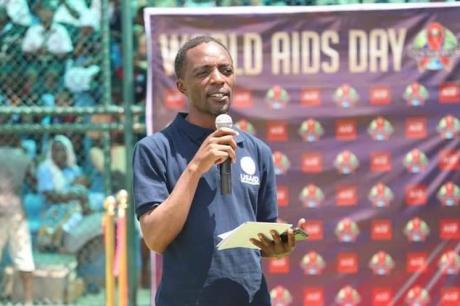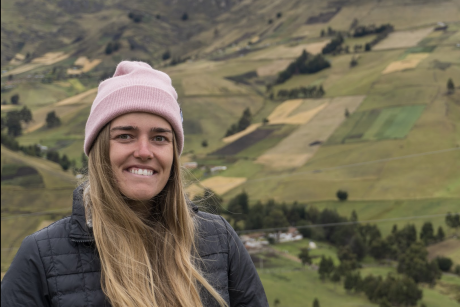
Me collecting larvae in Kinesamu village, Kenya
Published June 29, 2015, last updated on April 7, 2020 under Voices of DGHI
It is 2pm on Wednesday and I am sitting in a small room in Webuye district hospital. Two mosquito cages stand in front of me and as I hold the aspirator in my hand to chase a female anophelene mosquito, I can hear someone shouting from the other side of the room. I turn to locate whoever is trying to say something to me, only to be told “Rebeccah, you look like a witch doctor right now!” It is the voice of one of the doctors I am sharing office space with and I nod my head in agreement.
It may be witchcraft to some and a puzzle to others, all of who are astounded by the mosquito cages and basins full of dirty water floating with larvae. Yet despite these confused reactions, my summer fieldwork project is addressing an important global health problem. My project is investigating the use of agricultural chemicals and their potential influence on mosquito resistance to current insecticides being used in the treatment of bed nets. Bed nets are the primary mode of protection against malaria in most of Sub-Saharan Africa.
My journey into the Master of Science in Global Health (MSc-GH) program at Duke began in Eldoret, Kenya, a city that is close to my current research site Webuye. In Kenya, even though there has been a scale-up of malaria prevention strategies, malaria infection still remains high. Having worked as a research assistant on several malaria projects prior to joining the MScGH program, I wanted to come back to my own country to answer a question that was important to the local people.
My days begin with collecting larvae. We look for potential breeding sites, which include, but are not limited to, standing pools of water, tire tracks and hoof prints. There are several species of mosquitoes that can be differentiated at the larvae stage. The main species of mosquitoes responsible for malaria in this region is anophelene; however, we are sometimes forced to collect mosquitoes at the pupae stage when the breeding sites are much older.
The biggest hurdle I had to overcome was figuring out the best food for the larvae in order to ensure that they emerge to adults. I must admit that several mosquito larvae had to die during the course of the experiment as we tried yeast, dog biscuits and fish food. In the end we found that yeast produced the best results. Another challenge was deciding on the type of water in which to raise the mosquito larvae. At first we used tap water, which produced catastrophic results. We then had to try to raise them in their own breeding water; when this was not sufficient, we resorted to water from one of the major nearby rivers known as Nzoia. Once the larvae become adults, we feed them on sugar solution until they are three days old; at this point they are exposed to an insecticide. We then count how many of them die.
Every day is a learning process, but I am grateful for the MSc-GH program, which equipped me to face these challenges through the various workshops, as well as the guidance I continue to receive from my mentor, Dr.Wendy Prudhomme O’Meara.


